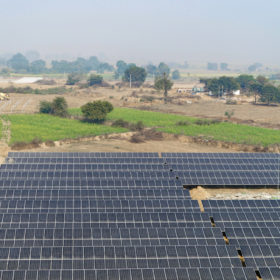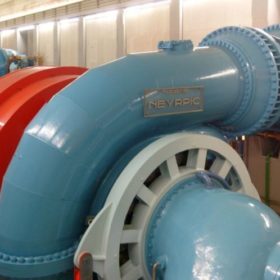From pv magazine International.
With predictions more than 5 million tons of waste PV panels will need handling every year by the 2050s, end-of-life pathways are an issue on the industry’s radar.
Thus far, however, there is no clear solution and many of the surrounding issues – such as how long a module can stay in operation for, which materials can be viably extracted during recycling and what dangers are posed by leaving modules in landfill – are not well understood. Scientists at the Indian Institute of Technology (IIT) in New Delhi have taken aim at such issues in research examining the potential for PV modules at landfill sites to release hazardous materials and the level of preparedness needed across the industry to deal with rapidly growing streams of PV waste.
PV leaching
The scientists presented their findings in Metal dissolution from end-of-life solar photovoltaics in real landfill leachate versus synthetic solutions: One year study, published in Waste Management and on the ScienceDirect website. The researchers exposed four commercially available PV modules – broken and intact – to solutions of varying acidity, including one of municipal solid waste leachate, for a year.
“Detailed PV leaching studies under realistic landfill conditions are crucial to understand the metal dissolution from this waste stream,” said the IIT group. “The present aggressive and short-period standard waste characterization tests (i.e. waste extraction tests [WET] and toxicity characterization leaching procedure) investigated in previous studies might not represent accurately the complex reaction and conditions prevalent in a real landfill.”
The group found, over a year, leaching of materials such as lead, cadmium and other metals was minimal – suggesting previous studies may have overestimated the danger. However, the group said its findings do not imply PV disposal in landfill is environmentally safe – only that more work is needed to examine the behavior of modules under a range of realistic disposal scenarios.
Being prepared
Another study from the group featured a survey of industry players at the 2019 Renewable Energy India trade show, in Greater Noida. The survey found 80% of respondents did not have any information regarding where their end-of-life modules ended up, and 76% did not recycle or reuse any waste material in their PV module production.
However, 84% of the respondents said they would be interested in participating in a subsidized recycling program.
“The major barrier is the lack of incentives for the development of a system which encourages collection and recycling of PV,” the researchers said. Details of the survey can be found in Understanding the possibility of material release from end-of-life solar modules: A study based on literature review and survey analysis, published in Renewable Energy and on the ScienceDirect website.
The IIT scientists concluded, a suitable collection method and regulations for recycling PV products could reduce contamination risks significantly. More supply chain stakeholder surveys could also help ensure an effective system is implemented, added the group.
This content is protected by copyright and may not be reused. If you want to cooperate with us and would like to reuse some of our content, please contact: editors@pv-magazine.com.









1 comment
By submitting this form you agree to pv magazine using your data for the purposes of publishing your comment.
Your personal data will only be disclosed or otherwise transmitted to third parties for the purposes of spam filtering or if this is necessary for technical maintenance of the website. Any other transfer to third parties will not take place unless this is justified on the basis of applicable data protection regulations or if pv magazine is legally obliged to do so.
You may revoke this consent at any time with effect for the future, in which case your personal data will be deleted immediately. Otherwise, your data will be deleted if pv magazine has processed your request or the purpose of data storage is fulfilled.
Further information on data privacy can be found in our Data Protection Policy.